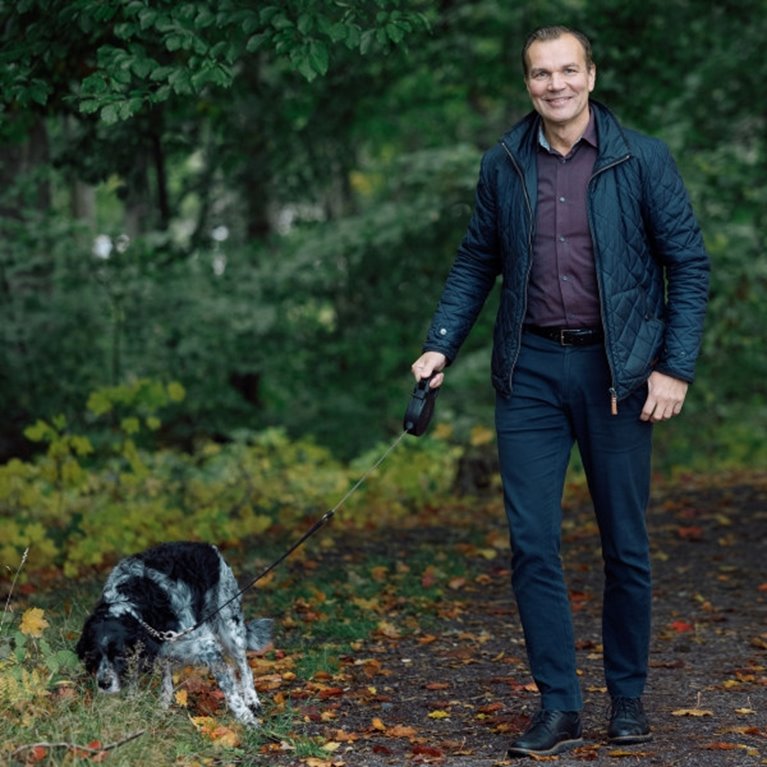Challenging the myths
Henrik Andersson, Member & Strategy Manager at Södra, looks at the reality behind tree plantations and the use of virgin fibre for pulp production – two subjects behind many misconceptions.

Tree plantations often face criticism for their perceived negative impact on the environment. As a forest owner myself, I am very aware of this.
However, it's important to understand that a plantation for us is not just a single tree species. Foresters strive to plant the right tree species in the right location, mimicking nature and ensuring optimal growth conditions. For instance, pine trees are better suited to dry soil on hilltops, while spruce enjoys hillsides, for example. Hardwoods including birch naturally thrive where it’s even more moist, on lower ground for example.
Swedish regulations now mandate planting pine in areas where the soil is better suited to the species, following the devastating drought in 2018 that affected forests in Sweden and beyond. This regulation aims to mimic natural variations in tree species across the landscape, enhancing the success of each.
One significant advantage of tree plantations is their ability to capture carbon. Younger trees absorb carbon more quickly, especially in the ages between 15-50 years where they add 10-20 m3 per hectare per year. Planting the right species in the right spot makes the forest resilient, robust and better able to withstand wind, drought, fungi and insect damage, all of which allows accelerated growth. But maybe most important is to avoid damage by keeping forests dense and thus capturing more tons of carbon dioxide. This process mimics what nature would achieve over centuries, but in a much shorter timeframe.
Critics argue that past practices involved planting spruce extensively, but efforts are now focused on increasing pine plantations to match natural patterns. Pine now represents around 36 percent of our plant sales in Southern Sweden, which is approaching the natural proportion. Additionally, forest owners follow certification rules to incorporate more hardwood species like birch, enhancing biodiversity.
Virgin fibre – suitable for pulp?
The debate between recycled and virgin fiber is also prevalent but rather than pitch one against the other, I would make the case for virgin fibre because recycled also has its place.
Forest owners aim to grow trees that can be used for building houses and furniture. They don’t plant for pulpwood. For this purpose you need straight, fairly knot-free logs with a small degree of taper so you can cut them in a sawmill. In order to get sawlogs from your forest, which is your ultimate target as forest owner, you need to keep the forest dense when the trees are young so branches do not grow too thick and the logs stay straight. Then during the ages of 55-70 years or so, for a tree to grow to a viable height and diameter for these purposes, several thinnings are required to allow the best trees to thrive, which also allows in more light which encourages biodiversity.
This thinning process produces pulpwood which is essential for creating paper and hygiene products. People are surprised that thinning really does take place on a tree-by-tree basis – but it’s actually that precise.
In addition, at final harvesting, the fact that trees are round and most wood products are perpendicular, leaves approximately 50 percent of the tree for other uses, including pulp. At Södra we also produce process and district energy, lignin, and liquid products such as tall oil and tannin among other things.
This combination of different products fits into a sustainable system in which every part of the tree is used. Paper products, especially single-use items like tissue, are often criticized. But when they are recognised as a piece of the puzzle of sustainable forestry targeted at getting logs for house building, perhaps they can make more sense to the consumer.
Increased understanding of sustainable forestry practices can only help dispel the many myths that exist about the uses of wood.
Curious about more myths that consumers have about the forest industry
Show all content for topic
Subjects: Pulp
